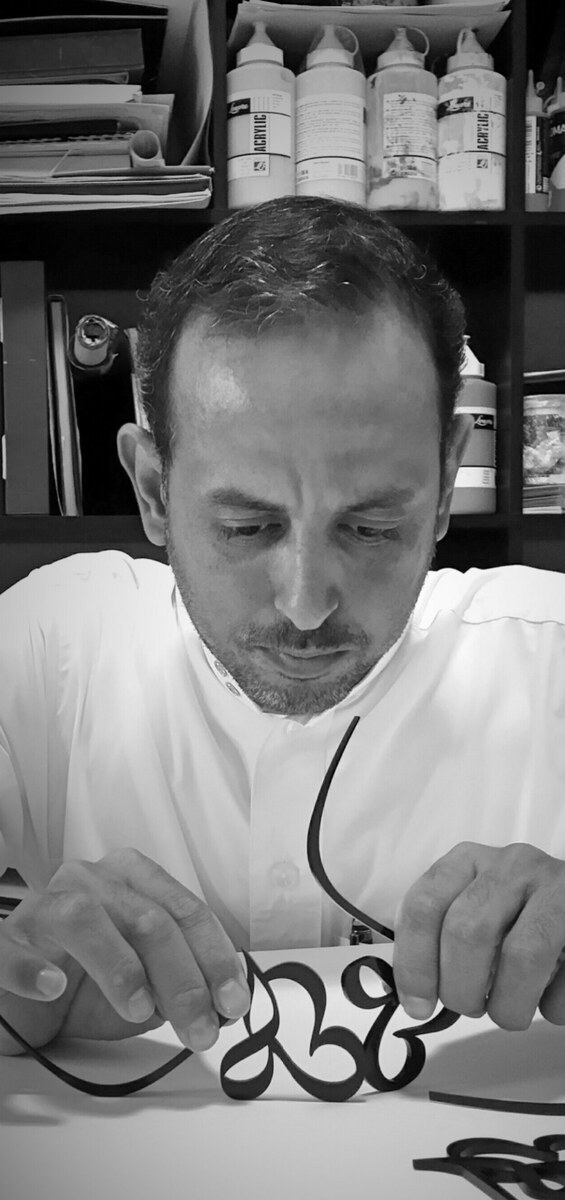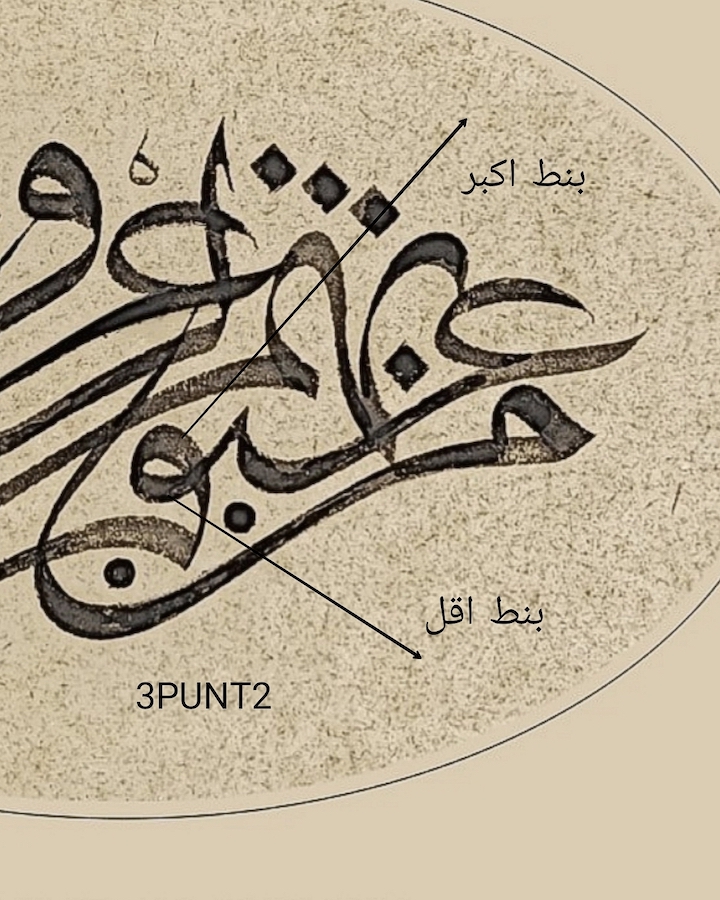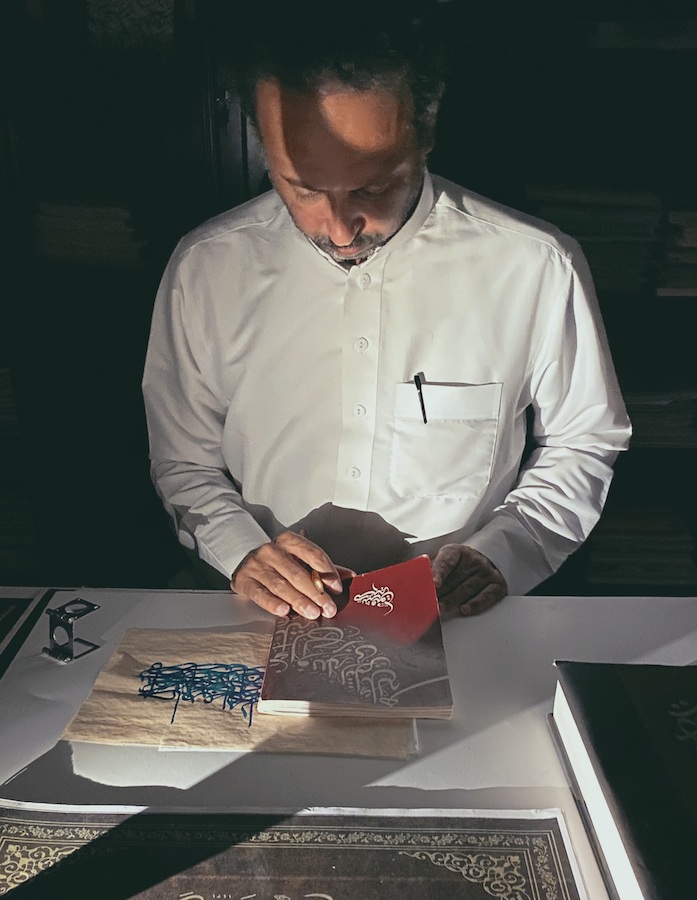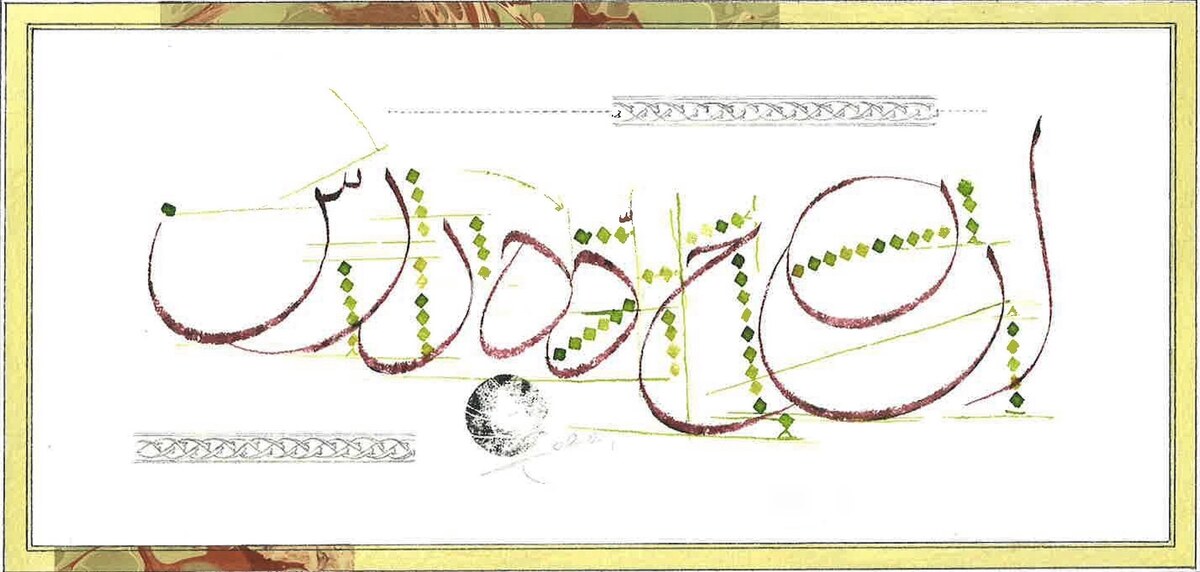TIRANA: Researchers are urging Albanian authorities to build a museum to display hundreds of Roman and Greek artifacts and ancient shipwrecks that are sitting under the country’s barely explored coastline.
Archaeologists at the Albanian Underwater Archaeology conference warned Tuesday that the wealth of underwater artifacts in the country’s southwestern seabed, near its border with Greece, could easily fall prey to looters or treasure hunters.
James Goold, chairman of the Florida-based RPM Nautical Foundation, said the objects — dating from the 8th century B.C. through to World War II — would be a great tourist attraction if properly displayed.
Goold’s RPM has mapped out the Ionian seabed from the Greek border all along to the Vlora Bay, finding at least 22 shipwrecks from the ancient times to World War II and hundreds of ancient amphorae. Those long, narrow terracotta vessels carried olive oil and wine along trade routes between North Africa and the Roman Empire, where Albania, then Illyria, was a crossroad.
“The time has come to build a museum for Albanian and foreign tourists,” said Albanian archaeologist Neritan Ceka.
Some amphorae may have already been looted — they are not infrequently seen decorating restaurants along the Albanian coastline.
Albania is trying to protect and capitalize on its rich underwater heritage, long neglected by its former communist regime, but preservation still receives scarce funding from the government in one of Europe’s poorest nations.
The arrival of RPM’s Hercules research vessel 11 years ago was “a real revolution,” Ceka said, praising its professional divers, high-tech sonar and remotely operated underwater vehicle.
RPM and a joint Albanian-Italian expedition are the only scientific underwater efforts in Albania so far, both with the government’s approval.
Now RPM believes it’s time for the not-for-profit Institute of Nautical Archaeology research organization, which is based in Texas, US, to explore the possibilities of excavating shipwrecks, a financially expensive and scientifically delicate process.
“There’s a special environment in Albania, because the coast has been so protected for so many years,” said INA’s David Ruff, a former commander of a nuclear-powered submarine.
Ruff said “one of the real gems of Albania is the Butrint site” — a UNESCO-protected ancient Greek and Roman site in southernmost Albania close to the Greek border.
He said INA’s Virazon II research vessel will stay for a month in Albanian waters “to understand the coast of Albania and if we can run a large-scale excavation here.”
Archaeologists urge Albania to protect underwater heritage
Archaeologists urge Albania to protect underwater heritage

Global Harmony event concludes with celebration of Egyptian culture in Riyadh

- Saudi Arabia and Egypt continue to strengthen their political relationship through agreements in trade, tourism, energy and culture
RIYADH: The Global Harmony initiative concludes its third edition with a week-long celebration of Egyptian music, art and tradition in Suwaidi Park as part of Riyadh Season.
Running from Nov. 24-30 and organized by the Ministry of Media, the event invites visitors to experience Egypt’s rich heritage through a range of cultural activities.
Speaking to Arab News, Egyptian Ambassador to Saudi Arabia Tarek El-Meligy highlighted the deep-rooted connection between the two nations. “The Egyptian community is the most harmonious, coexistent and understanding in a positive way within Saudi society,” he said.
“If you ask any Egyptian which country they would like to live in after Egypt, they will say Saudi Arabia.”

Sarry Shaaban, an executive and consultant at the General Entertainment Authority, said: “We are talking about millions of visitors, both residents and Saudis, entering the park. Whether I’m a resident, a Saudi or from a country hosting the event, it provides an opportunity for residents to learn about your culture, colors, explore its arts, food, crafts, and traditional industries.”
Live music and dance performances displaying Egypt’s cultural traditions, with the rhythm of drums and flutes and performers in traditional costumes, have brought the life and spirit of Cairo’s streets to Riyadh.
A separate bazaar area has been set up featuring Egyptian cuisine, traditional clothing and handcrafted items.

“An event like this carries positive messages and highlights something we strive to emphasize every day, that we are one people, united by love and affection,” said El-Meligy.
Egyptian Sameh Nabil emphasized the feel of unity: “This initiative brought us closer together as Egyptians, and with Saudis here, I feel like we are brothers. I always feel like we are not expatriates.”
And visitor Khaled Zahir said: “This event reflects the love, connection and affection between Egyptians living in the Kingdom and Saudis.”

Egyptians make up 11 percent of Saudi Arabia’s population, according to the Saudi Census, meaning such exhibitions are important in promoting mutual respect and harmony.
El-Meligy said Saudi Arabia hosted the largest Egyptian expatriate community abroad, with remittances from those in the Kingdom forming a significant part of their home nation’s income.
“In recent months, remittances from Egyptians abroad have increased substantially, thanks to the facilities between the two countries and the confidence in both the Saudi and Egyptian economies,” he added.

Saudi Arabia and Egypt continue to strengthen their political relationship through agreements in trade, tourism, energy and culture. In his October visit to Cairo, Saudi Crown Prince Mohammed bin Salman met with Egyptian President Abdel Fattah El-Sisi to discuss investment opportunities and the establishment of a supreme coordination council to deepen bilateral relations.
Trade between Saudi Arabia and Egypt saw a 35.16 percent annual increase in the first half of 2024, according to the General Authority of Statistics. The increase was driven by a 73.44 percent surge in Saudi imports from Egypt, totaling $4.18 billion.
Egypt has also shown a growing interest in investing in Saudi Arabia, with a 71 percent rise in licenses granted to Egyptian firms in the second quarter of 2024.
The festival, which began in October, highlights the lives, contributions and cultural integration of its residents. So far, it has celebrated cultures including Indian heritage and moving through Philippine, Indonesian, Pakistani, Yemeni, Sudanese, Bangladeshi, Jordanian, Lebanese and Syrian traditions.
Made with love — Saudi commission presents works by global artisans

- Northern Ireland, Japan and Mexico among countries represented in International Handicrafts Week
- Through Banan and other initiatives, the Heritage Commission raises awareness about the importance of handicrafts as part of cultural heritage
RIYADH: The second Saudi International Handicrafts Week — known as Banan — is offering a wealth of live music, interactive experiences and artisanal works from around the world in Riyadh this week.
Running until Nov. 29, the event is organized by the Saudi Heritage Commission and features artists and representatives from over 20 countries, exhibiting alongside the Kingdom’s own talent.
Katherine McDonald, director of Crafts Northern Ireland, told Arab News: “I think the craft of any country (paints) a picture about the people, the landscape, the culture … it’s an important part of the identity of a country. That's why it’s important that we can allow craft makers to flourish, to pass on skills, to train new craft makers, because they’re as important as the food, as the economy.”
The collective, exhibiting in Saudi Arabia for the first time, represents artisans in Northern Ireland whose work ranges from textiles and jewelry to ceramics and furniture. Items from 13 of them are on display at Banan.
“We try to have a range of work that's representative of what makers are doing in Northern Ireland,” McDonald said. “We have textiles made from local wool, ceramics ... there’s always something that allows an artist to express themselves and for people to find something they really like that suits their style.”
Award-winning contemporary silversmith Cara Murphy is largely inspired by the environment to create unique pieces such as bowls, clocks, and candle holders. She is the designer behind the past four Randox Grand National awards, often called the world’s greatest steeplechase.
Jakki Trainor crafts clay works that focus on the word “figment” to depict real or imaginative flora, fauna and folklore, while Joel Smyth creates eclectic pieces of jewelry inspired by European minimalist design, multifunctionality and interaction.
McDonald said: “Jewelry is always popular for gifting and for yourself. And we also have glass and some wooden articles as well. So, it’s a range of materials.
“This is what’s so interesting to see, what different countries and different artisans have done with the same materials. There’s such diversity. Everything is unique.”
In addition to the 500 artisans marketing and selling their work, the event features multiple interactive and immersive zones including the handicrafts arts village, a live craft performances pavilion, crafts exhibition and workshops pavilion, a platform for entrepreneurs and craft organizations, and a children’s activities pavilion.
Hailing from Hungary, woodworker Bela Zalai has been honing his craft for over 20 years. For his first visit to the Kingdom, he is exhibiting an array of his work including flutes, bowls, pots, jewelry and chairs.
Carving a flute at his booth, he told Arab News: “In Hungary, handicrafts is a very rich culture … it’s a very popular thing — pottery and leather work and a lot of things. In these times, everything is too modern and fast … handwork is very personal, unique and valuable.”
Zalai works as a zoologist, but since he started his handcrafting journey the day-job has taken second place: “Hand work is much more important for me than biology at the moment,” he said.
Through Banan and other initiatives, the Heritage Commission raises awareness about the importance of handicrafts as part of cultural heritage, ensuring they are preserved and passed on.
Saudi International Handicrafts Week is open to the public from 4 p.m. to 11 p.m., except on Monday and Wednesday when hours are 10 a.m. to 11 p.m.
Ithra conference in Saudi Arabia shines spotlight on vibrant Islamic arts

- Conference seeks to highlight how traditional crafts can inspire innovative solutions in areas such as design, business and urban development
- Adding to the immersive experience, three specially curated films explore the artistry and history of Islamic crafts
DHAHRAN: The King Abdulaziz Center for World Culture, also known as Ithra, is hosting the second Islamic Art Conference from Nov. 25-30.
In partnership with the Abdullatif Al-Fozan Award for Mosque Architecture, the theme of this year’s event is “In Praise of the Artisan.” Featuring 50 participants from 14 countries, including 27 distinguished speakers, the conference will explore the connection between heritage and innovation in Islamic art.
From panel discussions to live demonstrations, and with a diverse lineup of artists, historians, curators and academics, the program offers attendees an opportunity to engage with the artistry and history of Islamic craftsmanship.
There are thought-provoking lectures, hands-on workshops and interactive demonstrations, all designed to immerse visitors in the beauty and intricacy of Islamic art forms. A central theme this year is the vital role played by artisans in preserving cultural heritage while adapting to contemporary challenges.
Through these discussions, the conference seeks to highlight how traditional crafts can inspire innovative solutions in areas such as design, business and urban development.
Running alongside the event is the “In Praise of the Artisan” exhibition. This display of historical artifacts and contemporary works highlight the timelessness of Islamic artistry through media ranging from ornate wood carvings and luminous textiles to intricately painted ceramics and dazzling metalwork. For those eager to learn skills for themselves, there are workshops on crafts such as embroidery, wood carving and sailboat crafting.
Adding to the immersive experience, three specially curated films explore the artistry and history of Islamic crafts, delving into the lives of artisans and the cultural significance of their work. Each screening is followed by a discussion with the filmmakers.
Beyond the main exhibition, Ithra’s plaza will host eight mini-exhibits in collaboration with institutions such as The Heritage Commission, The Royal Institute of Traditional Arts, and The General Authority for the Care of the Two Holy Mosques. These highlight regional crafts from across the Islamic world, such as Turkey and Egypt, emphasizing the event’s global nature.
Prominent voices such as Dr. Mashary Al-Naim, Dr. Mahmoud Erol Kilic and artist Ahmad Angawi will lead debates on the challenges and opportunities artisans face in preserving their crafts in an era dominated by mass production. Topics will include the integration of craftsmanship into modern business models and the role of artisans in sustainable urban development.
The conference also emphasizes the potential of traditional crafts to drive social change. By fostering collaboration between artisans, designers and cultural institutions, it creates pathways for them to thrive in contemporary markets while maintaining their historical integrity.
One highlight is the work of Dhai Ibrahim Al-Otaibi, a rising star in the art of Naqda embroidery. Known for her innovative approach, Al-Otaibi blends the opulence of traditional silver and gold threads with modern fashion aesthetics.
“Naqda embroidery signifies a critical aspect of Saudi cultural identity, especially in the Eastern and Central regions,” Al-Otaibi told Arab News.
“By reinterpreting these methods, I hope to make this craft more accessible to new generations while preserving its authenticity.”
Al-Otaibi began her journey as an apprentice under the guidance of artisan Sarah Al-Dosari and is one of only 14 of Naqda embroidery practitioners in Saudi Arabia. Her contributions to the exhibition not only show her personal artistry but also underscore the enduring relevance of this centuries-old craft.
“In Praise of the Artisan” will continue at Ithra until December 2027, providing plenty of opportunity to experience the splendor of Islamic arts and their evolving role in a modern world.
From struggles to innovation: How Saudi calligrapher Abdulaziz Al-Rashedi revolutionized Arabic script

- ‘I feel there is a holy light within the letters,’ says Abdulaziz Al-Rashedi
DUBAI: Saudi calligrapher and arts instructor Abdulaziz Al-Rashedi’s first love was the pen. His fascination with writing began in elementary school in the Eighties in his hometown of Madinah.
Al-Rashedi talks about holding a pen in the same way a musician might discuss holding their instrument. In the eyes of the calligrapher, writing is an artistic act, like a dance, that has its own kind of magic.
“What I loved about the pen was the way the ink was flowing out of it,” he tells Arab News. “The pen led me to my love of writing Arabic calligraphy.”

But there were challenges imposed by the conservative social environment of the Kingdom in the Eighties and Nineties.
“People didn’t regard art as something important. During that time, people thought that art couldn’t generate money. For them, it was a waste of time,” he says. “In such a depressing environment, I was suffering from people’s lack of interest. They were saying that the writing would distract me from my studies. But actually, it encouraged me to study.”
Not everyone disregarded his interest in pursuing calligraphy, however. Al-Rashedi’s late father was always a supporter.

“He was a believer in writing, and conserving it,” Al-Rashedi says. “He thought I was doing something important with my life, even though others thought it wasn’t important. They likened it to making scribbles. I was literally making art on my own. None of my friends shared this interest with me and there were no calligraphy institutes to encourage this talent. The situation was very difficult.”
But in 1993, Al-Rashedi learned there was, in fact, a master Saudi calligrapher living in Madinah: Ahmad Dia. He kindly agreed to teach Al-Rashedi the basics of Arabic calligraphy. And, perhaps just as importantly, to do so in his home, which Al-Rashedi compares to a school and a museum, as well as a meeting place for calligraphers.
“I was young, but he treated me like a man,” the artist recalls. “For us calligraphers, he was like a spiritual father figure, who planted a seed of determination in us. He always encouraged us and never told us off if our writing wasn’t on point.”

Al-Rashedi remained in contact with his tutor until Dia’s death in 2022 during the COVID pandemic. “When he died, it felt as if the light went off,” Al-Rashedi says.
Al-Rashedi also trained himself by copying the work of another important figure: Hashem Al-Baghdadi, the influential Iraqi calligrapher and educator who published books on the rules of Arabic calligraphy. Al-Rashedi describes the pre-social media era as a “truly dark period” when there were no opportunities to host exhibitions or share his work with others.
“People weren’t communicating with each other. It was a period that lacked (opportunity) and even good materials, such as pens and paper,” he recalls.
But with the advent of social media, most notably Facebook, and the opening of a few art galleries, including Jeddah’s Athr Gallery in 2009, things improved drastically. Today, Al-Rashedi is able to share his work on Instagram and other platforms, displaying the skills he has honed over three decades of practice.

Arabic calligraphy is an internationally respected art form that has existed for thousands of years, exercised in Islamic texts and found on monuments around the world. So, what is its long-lasting secret?
“I often ask myself why the curves of Arabic calligraphy have bewitched people for so long, and I believe it inevitably has something to do with its holiness,” he says. “Allah has been an inspiration for calligraphers and their innovation of writing. I feel there is a holy light within the letters of Arabic calligraphy.”
But Al-Rashedi also believes that, for many years, calligraphy has been stuck in a rut, untouched by modern innovation or creativity.

“Many calligraphers have literally said that Arabic calligraphy has reached its end and no one could add anything new to it,” he says. “Such an idea is incorrect.”
Indeed, Al-Rashedi has invented his own form of Arabic calligraphy, which he calls “3punt.” (He says the name refers to the size of the letters, which are written using three different pens.)
“It depends on the idea of lessening the thickness of the letter. Usually, one pen is used in Arabic calligraphy. But I discovered that the original bulkiness of Arabic scripture and the usage of just one pen prevents Arabic calligraphy from having new forms of writing being added to its system.”
Based on a strict set of rules, Al-Rashedi’s 3punt calligraphy contains 55 “subtypes of writing,” he says. It has its own lightness and elegance, with carefully choreographed flowing lines of slender Arabic script.
Ultimately, Al-Rashedi believes that Arabic calligraphy is about connections.
“If we look at Latin or Chinese scripture, on letters like ‘n,’ ‘e,’ or ‘r,’ they are based on separate components. But with Arabic calligraphy, you can connect six or seven letters in one go,” he says. “Without a doubt, Arabic writing — as an art form — is superior to other types of writing.”
US contemporary artist Brendan Murphy discusses his first show in Riyadh

RIYADH: The American contemporary artist Brendan Murphy brought his solo exhibition “Complete Control” to Ahlam Gallery in Riyadh on Nov. 7. The Riyadh show is the conclusion of a global tour that Murphy began in June 2024 at Fineart Oslo.
The show features a number of Murphy’s iconic “Spaceman” sculptures, with a particular focus on his limited-edition collectible series titled “Magication.”
In an interview with Arab News, Murphy said the main goal of his show is to bring people “into the moment.” He also stressed that he felt a “creative cultural resonance” with the Kingdom, where he believes people have shown “an appetite for creative works.”

He said: “I have a lot of stuff I’m working on, but I’m focused on building a foundation in Riyadh right now. This show is not a one-shot deal, I want to be a part of this renaissance (that’s happening in Saudi Arabia) for the next five to 10 years, at least. I want to be a part of it — I want to lead it if I can.”
Murphy’s body of work includes colorful abstract paintings and sculptures of his signature Spacemen, which explore themes of beauty, power, and the human experience.
As a kid, watching astronauts and space shuttle launches played a major role in Murphy’s life and eventually became one of his main artistic inspirations.

“My spacemen have little to do with space travel,” he explained. “They epitomize embracing the unknown — taking that step — more than somebody that literally is flying into darkness.”
Murphy’s Spacemen come in various sizes and forms, including small collectibles and large-scale installations. This versatility allows them to fit into diverse settings, from private collections to public art displays. The sculptures can be found across the world, including a 13-foot Spaceman in Houston’s Minute Maid Park baseball stadium and a 22-foot Spaceman in Oslo.
Murphy hasn’t always been an artist. He was once a professional basketball player in Europe, and then became a Wall Street trader. “I did not make a full pivot into accepting that I was a creative person until I was maybe 29,” he said. Today, he is one of most financially successful contemporary artists in the world.
In 2021, Brendan created his “Boonji Project” — a collection of his artwork as non-fungible tokens — and launched it on the Ethereum blockchain (which uses the cryptocurrency Ether). It became the largest primary NFT sale in history, producing $15.5 million dollars.

His work has proven popular with both serious collectors and celebrities, including the tennis players Novak Djokovic and Serena Williams, as well as US business mogul Warren Buffett.
Inspired by artists including Jean-Michel Basquiat and Jackson Pollock — famed for their use of color — Murphy’s art aims to encourage the viewer to tune into their emotions and discover the unknown.
“I love color as a means of communicating a feeling,” Murphy said. “When I make something and I get it right, my work creates energy and that’s pretty cool. Color is the easiest way of creating energy; different colors connect with different feelings.”
Murphy said his practice, by choice, demands that he step out of his comfort zone. He utilizes non-traditional methods and rare materials including chrome and diamonds to create conceptual pieces. He has become famous for his extravagant works of art, including “Frozen with Desire,” a sculpture of an astronaut encrusted with 6,200 diamonds, priced at $25 million.
“As an artist, you have to be uncomfortable all the time,” he said. “Find comfort in what you can control, then break it and go where you have no idea what you’re doing.”



















